Now that the move from the old location is finished, there is a lot to share.
First up is a piece that I had been seeking for nearly seven years: the aircraft's chemical toilet.
The Boeing B-17 carried a chemical toilet at the back of the waist compartment, just beside the main entry door.
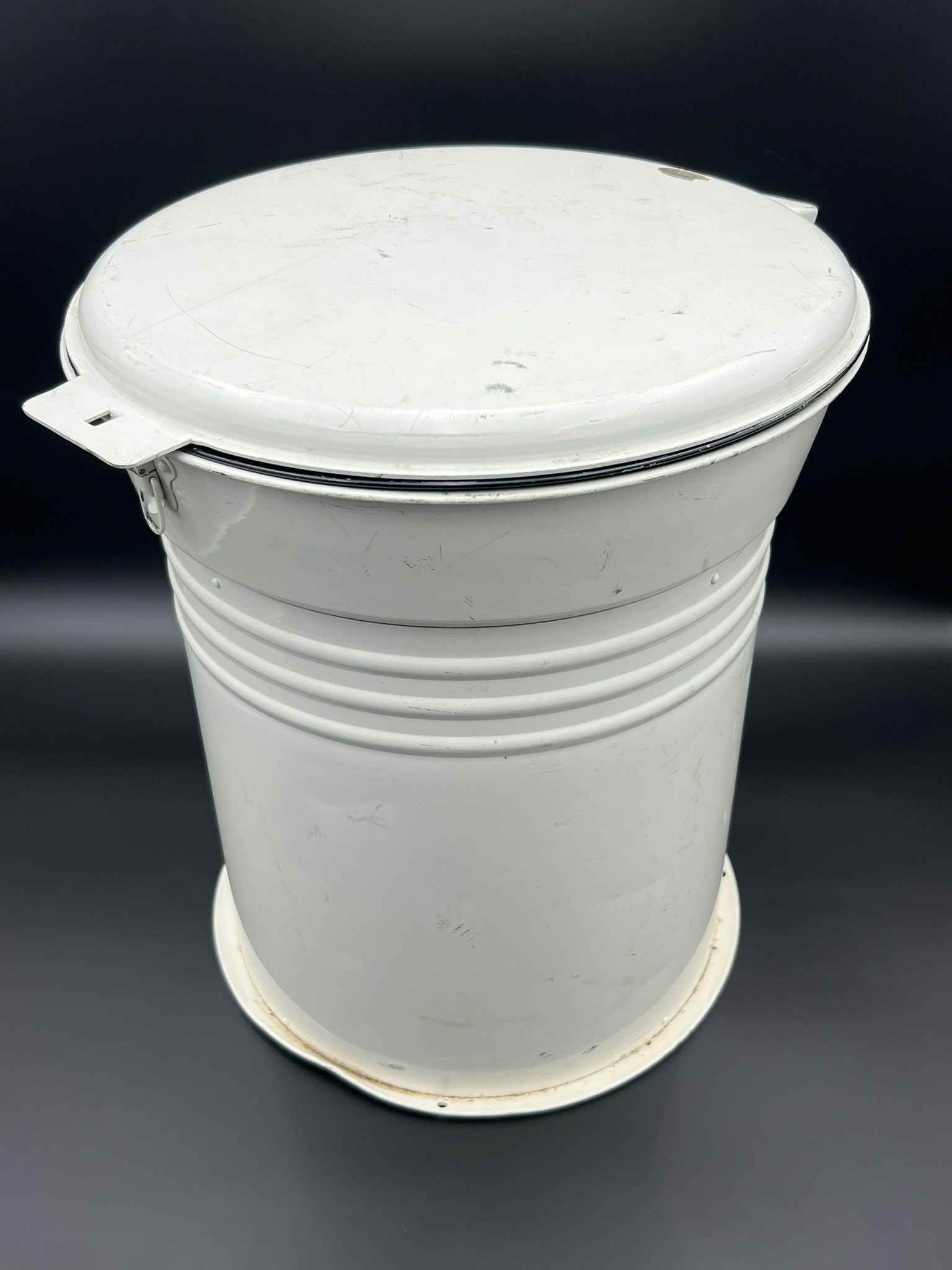
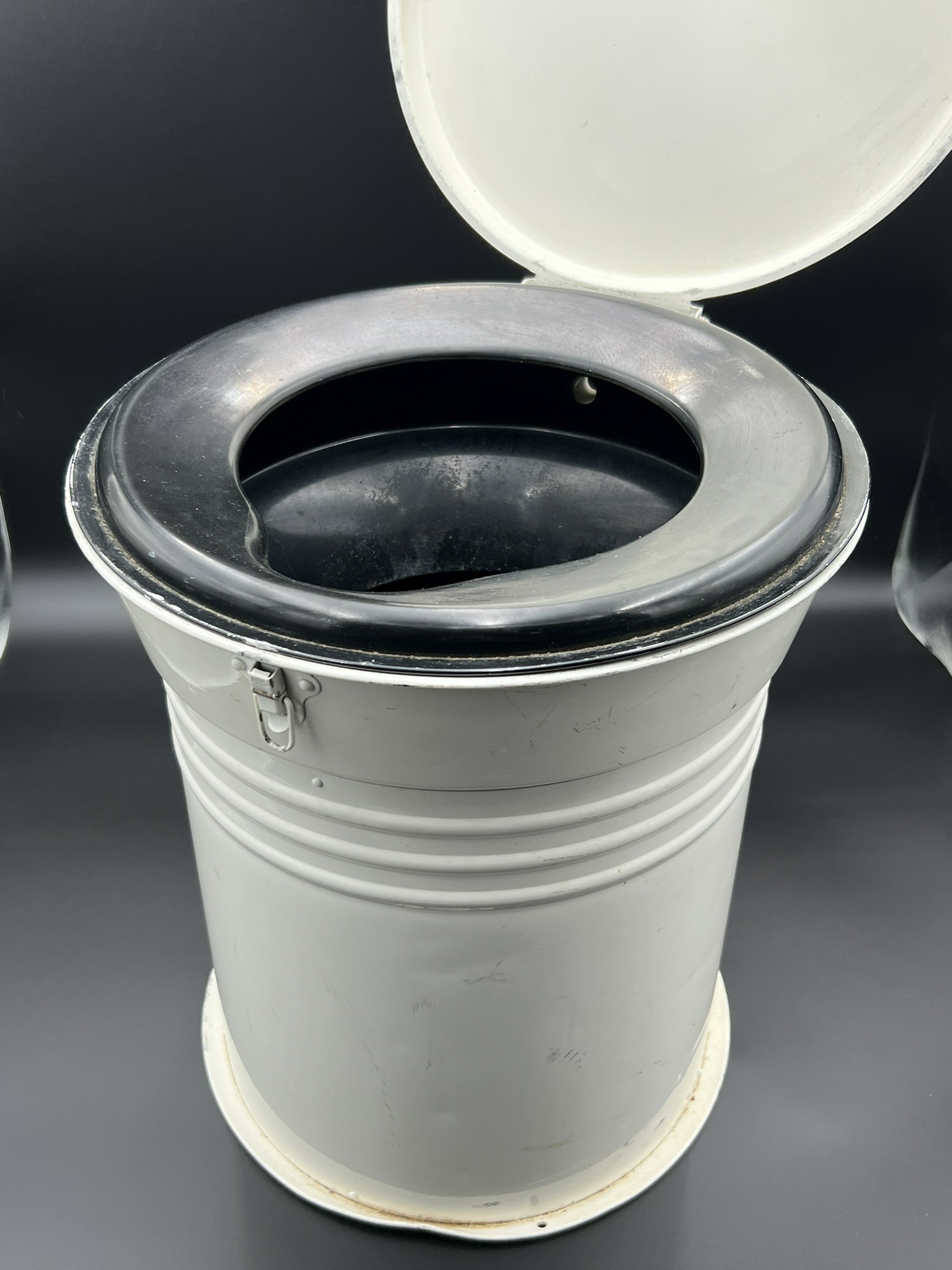
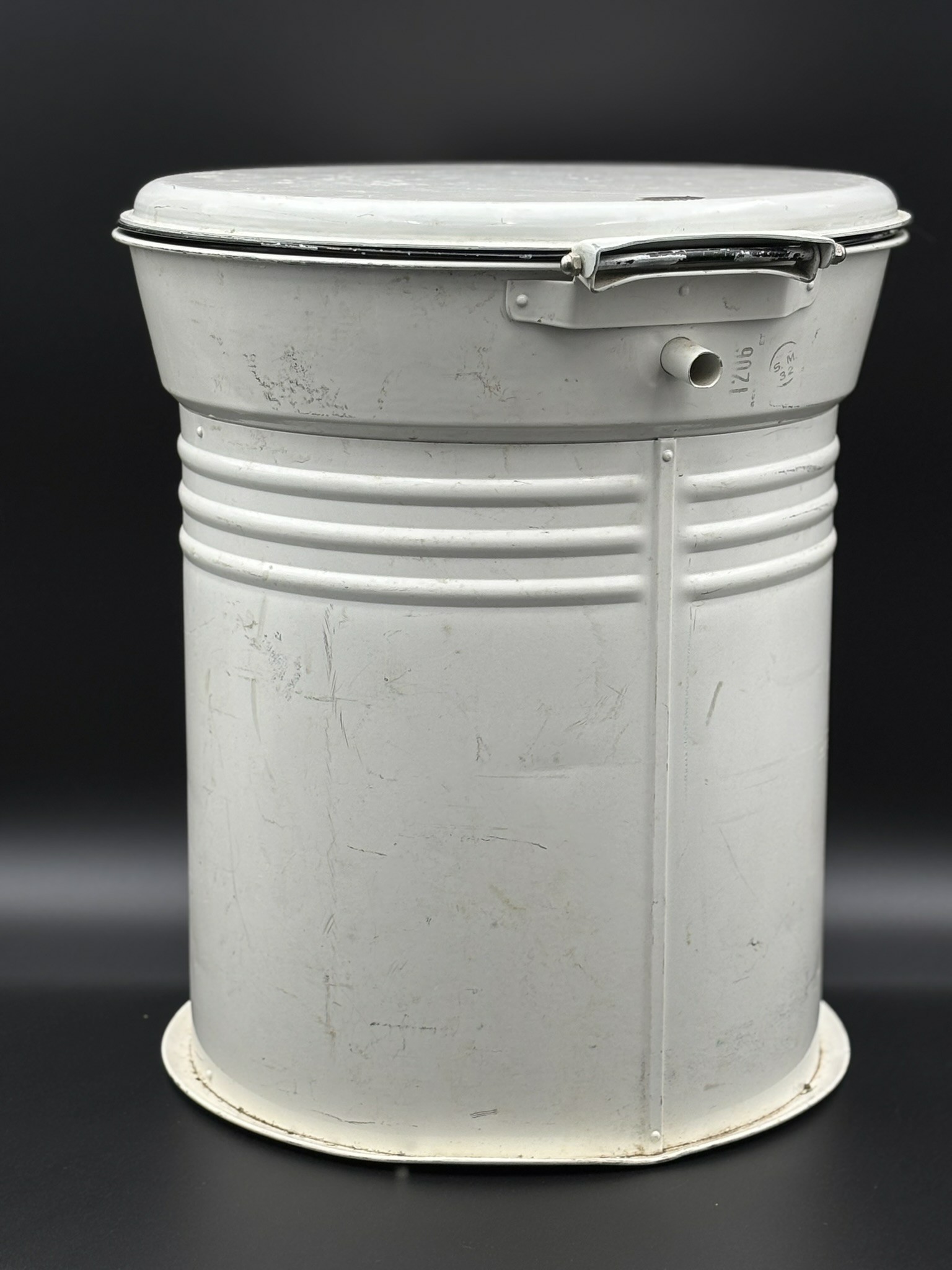
The newly arrived chemical toilet for Lucky Thirteen.
Photos taken 28 April 2025.
Standard equipment on large aircraft, the chemical toilet was essentially nothing more than a bucket with a lid, inside of which was a disposable paper liner.
Two companies produced chemical toilets for the Boeing B-17 as Government Furnished Equipment (GFE): Sierra Manufacturing of Pasadena, California and Imperial Brass of St. Louis, Missouri. The newly acquired toilet for Lucky Thirteen is a Sierra model, with the company logo being on the back of the lid. Judging from period photographs, it appears that the Imperial Brass model was slightly shorter, with two pair of bands, evenly spaced, rather than three bands near the top.
The installation blueprint for the B-17's chemical toilet is somewhat unclear about which aircraft carried them as standard. In one place they are noted as standard up through block F-60-BO, while stating in another that they were standard on all B-17Fs. The latter includes notations for components as late as block F-105-BO. The latter appears more accurate, as the replacement for the chemical toilet was introduced with block F-120-BO. (More on the replacement later) Since B-17 blueprints do not include notations for aircraft license-built by Douglas and Lockheed-Vega, based on when Boeing made the change, Lucky Thirteen (who was Douglas built) was most likely issued with a chemical toilet.
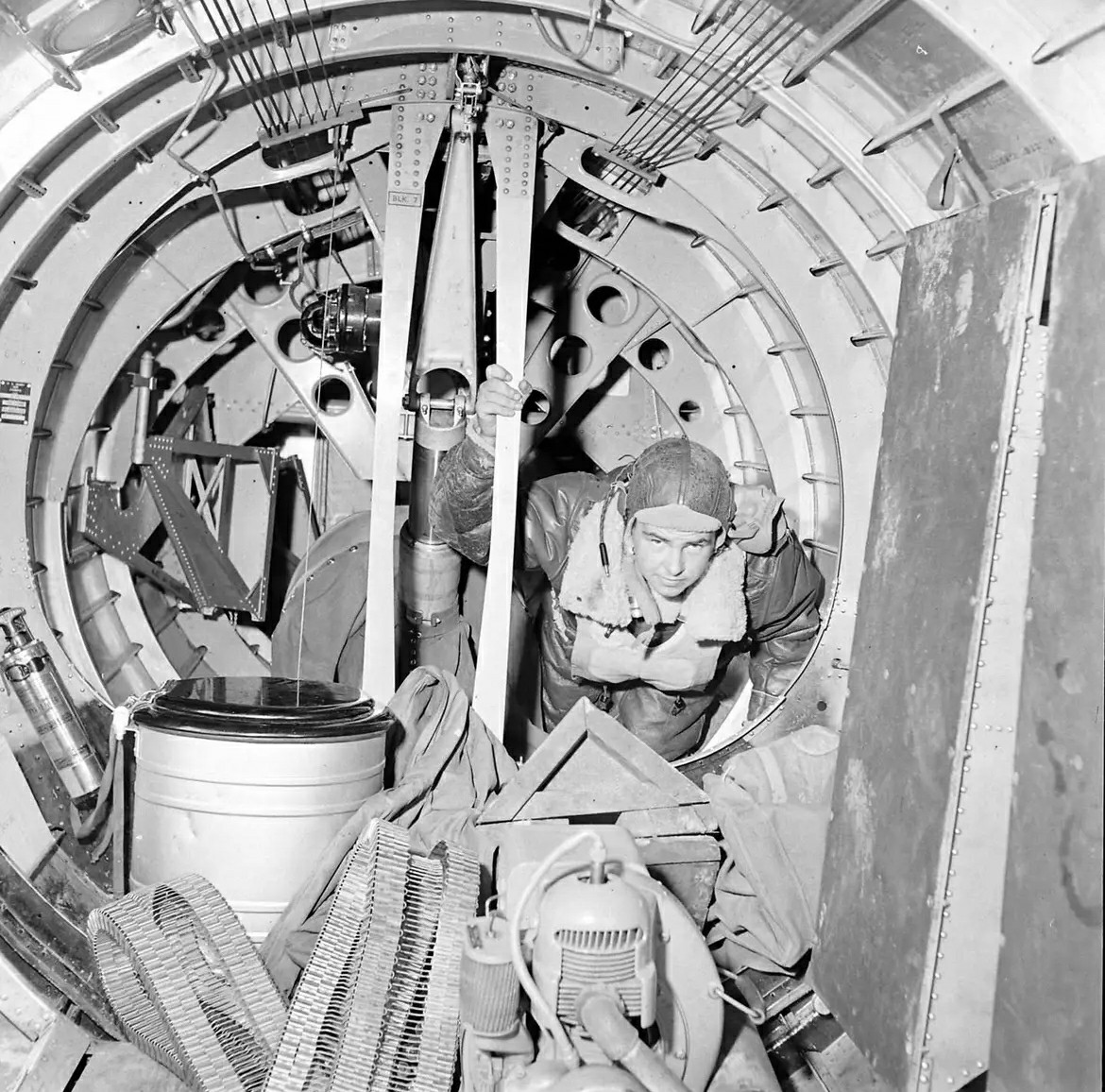
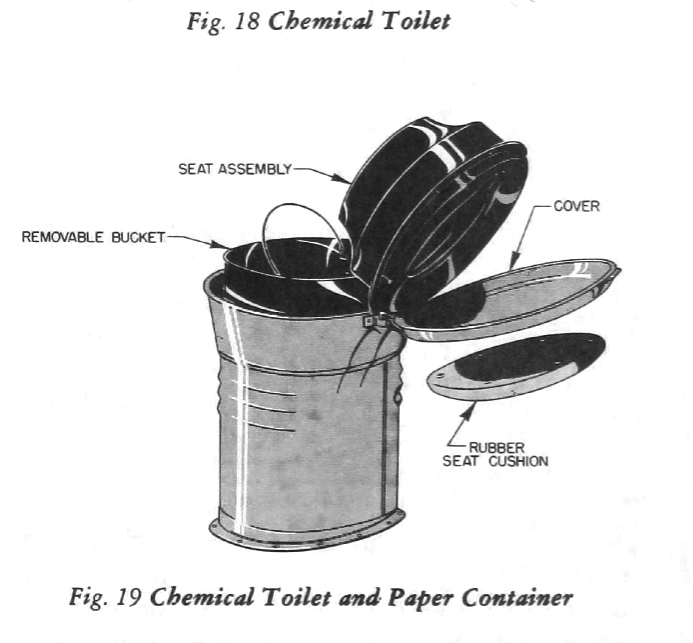
Left:
An airman crawls forward from the tail wheel through a B-17's Station 7 at Hendrick's Field near Sebring, Florida. Near him sit the aircraft's chemical toilet, Auxiliary Power Unit, engine maintenance platforms, a Type A-2 fire extinguisher, and a few Hughes-type ammo chutes. If you can help us acquire any Hughes-type ammo chutes, particularly left-hand feeds, please let us know!
We believe that the toilet shown here is an Imperial Brass model.
Right:
Manual illustration of a Sierra chemical toilet.
It should be noted that the chemical toilet was not a beloved piece of equipment and many units elected to remove them entirely. This is the reason that, for the B-17G series, the toilet was no longer installed.
As noted in our article on the relief tube:
Diet was an important part of high-altitude operations. Meals for crews going on operations were deliberately planned to be high in protein and low in fiber. In fact, Army airmen were some of the only servicemen in the world to regularly eat real eggs rather than the powdered variety. Relief facilities not withstanding, a bad case of gas could be dangerous, if not fatal. Perhaps no better illustration of this exists than to watch what happens to a bag of potato chips when brought to high altitudes without being in a pressurized environment.
The area around the toilet was sprayed with black asphalt varnish, and a coat hook, toilet paper holder, and heated clothing rheostat were mounted nearby. Inside the bag was a paper liner - whoever was unfortunate enough to need the toilet was responsible for disposing of the bag.
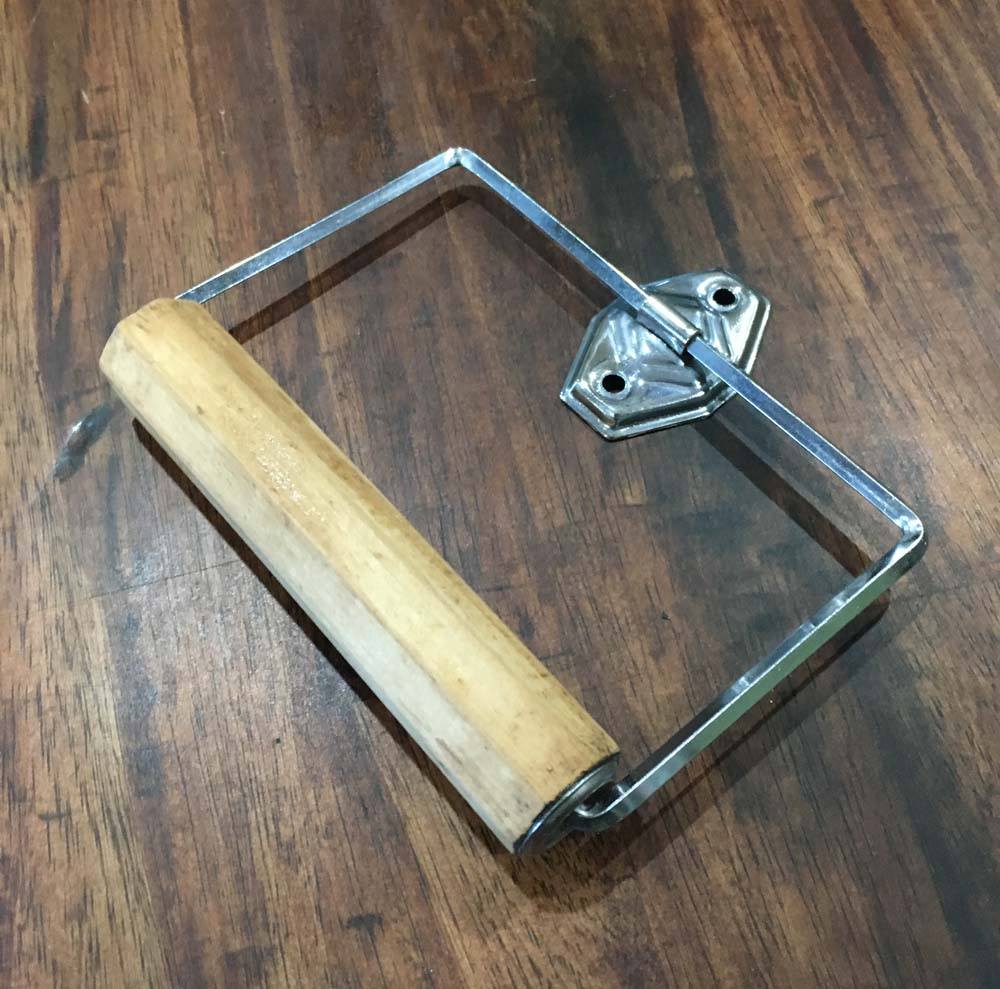
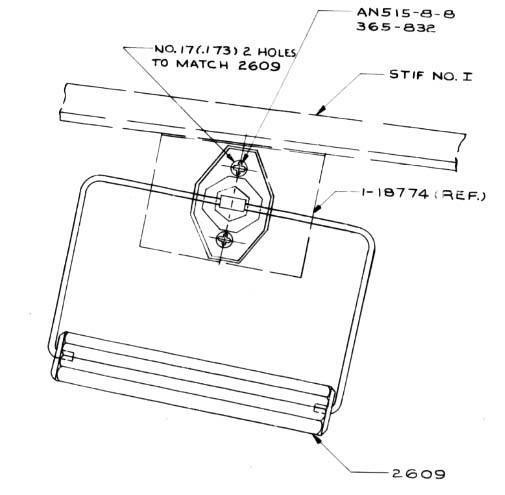
Left:
The toilet paper holder for Lucky Thirteen.
I had to track down and locate two separate holders from 1940s houses to get the parts I needed to recreate the original. Then, I had to clean and restore the pieces back to factory condition. Wartime holders were produced by Seattle Hardware, though Autoyre also produced them on the civilian market.
While working on this project, I was able to track down another Toilet Paper Holder for Memphis Belle (41-24485, 91BG) at the National Museum of the US Air Force, though it does not appear they went through installing it.
Photo taken 6 March 2019.
Right:
Excerpt taken from the original Boeing blueprint for lavatory equipment aboard the B-17F.
The chemical toilet was ultimately replaced with a series of "sanitary cup" dispensers. Dispensers were provided for the nose, cockpit, radio, waist, and tail compartment. Each contained a series of paper cups and lids to seal them once used.
As awful as this may sound, it was a necessary solution to a serious problem -
The primary issue with the chemical toilet was, after all, that it could not be easily accessed by everyone on the crew. If an airman found himself needing a toilet, something had to be done. Evidently, the sanitary cup dispenser system worked, as a technical order dated 27 February 1945 called for all B-17Fs and Gs still without sanitary cup dispensers have them installed.
As one might imagine, these sanitary cup dispensers are not often seen in modern restorations. Credit where credit is due, the National Museum of the Mighty Eighth Air Force in Savannah, Georgia remembered to include these rarely noted pieces aboard City of Savannah (44-83814).
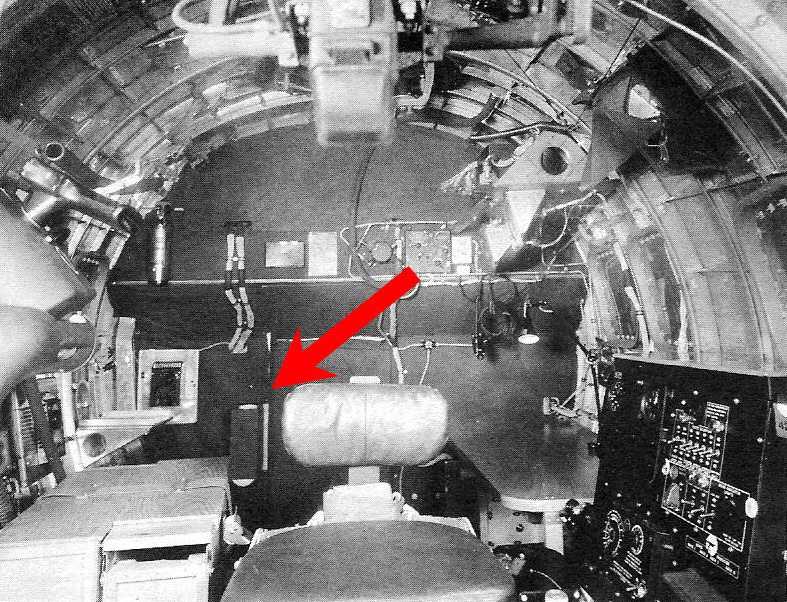
The sanitary cup dispenser is highlighted in the nose compartment of a B-17G.
Special thanks to longtime Hangar Thirteen supporter Chris Hrabina of Baytown, Texas for his help with the chemical toilet. Not only was he willing to make the drive to pick it up, but he even went so far as to purchase and pay for it himself. Chris said that he felt bound to do so - after all, how many people can say they bought a World War Two airplane toilet?
Thanks Chris!
But if it is at all possible, we do ask our supporters to keep an eye out for additional units -
Some of you may be aware of our close relationship with Project Warbird of Anderson, South Carolina. Project Warbird, headed by Eric Miller, last year took on the massive project of restoring Consolidated LB.30 Liberator II Maid of Athens (AL557). The LB.30 was an export variant of the Liberator during the US neutrality years, sold to Great Britain before the B-24 had received a US Army contract (hence the different designation). Project Warbird seeks to restore the old bomber back to her original, 1941 bomber configuration. While Project Warbird has more to work with than Hangar Thirteen in terms of original pieces, references and original components are far more scarce due to her early/prewar status. As such, we two projects wish to work together to ease progress on both aircraft.
Project Warbird's website has recently been revamped to showcase the Liberator, and you can check it out here.
The LB.30 carried a chemical toilet just aft of the bomb bay. The toilet was located where later Liberators mounted their ball turret assemblies, though early examples, like Maid of Athens, mounted the camera and flare equipment here. If you happen to come across another Sierra or Imperial Brass chemical toilet, please let us know!
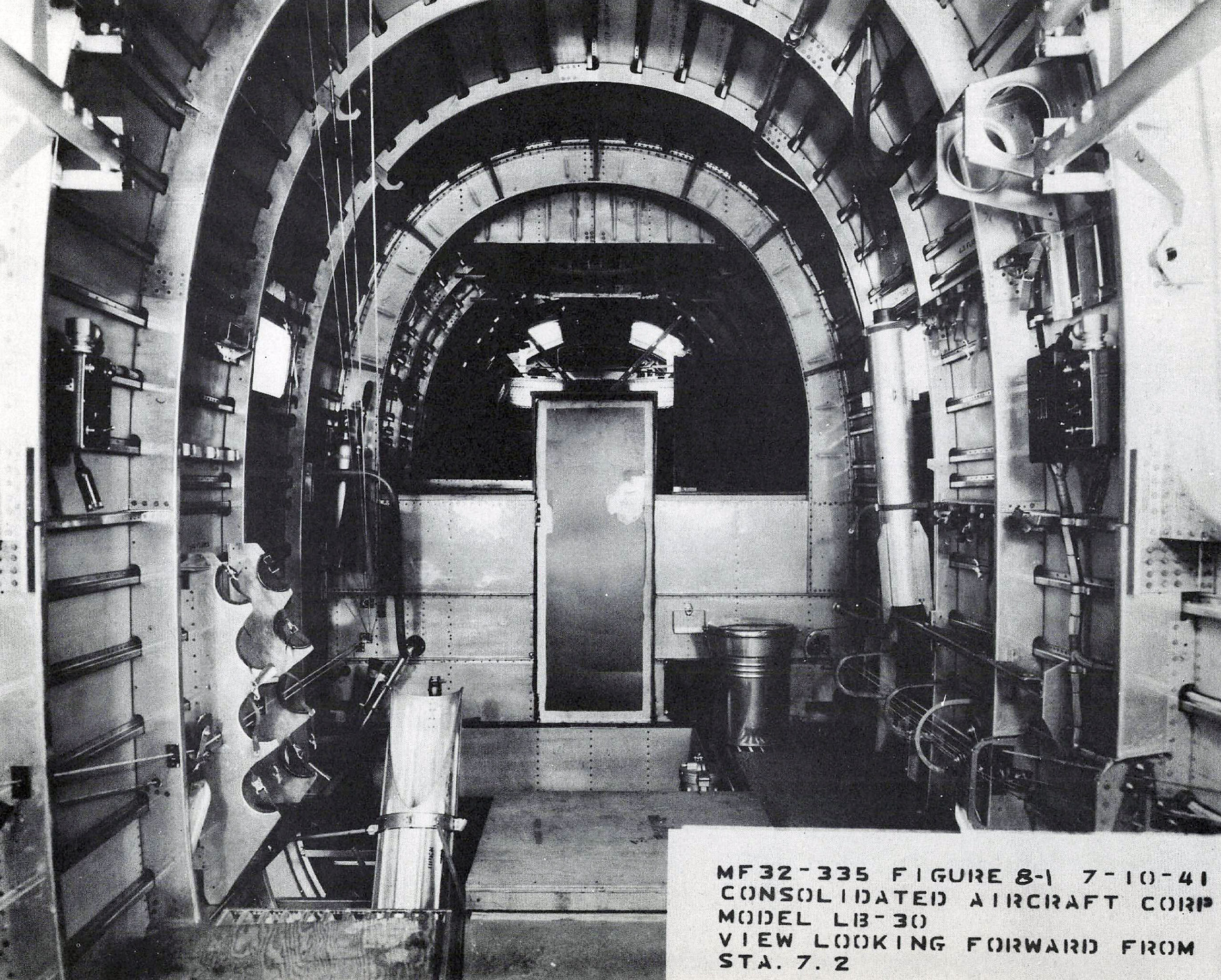
Manual image of the waist compartment aboard a LB.30 Liberator II, looking forward at the flare chute from waist gun positions. The aircraft's chemical toilet is visible just to the right of the bomb bay entry door.
When the Type A-13 ball turret was introduced in B-24 block D-140-CO, the toilet was moved farther aft, next to the waist entry hatch.
The Hangar Thirteen Foundation is a 501c3 nonprofit charity and donations toward this project are tax deductible. If you can spare a little to help this project, you can guarantee that you will see the results on Facebook and here on our website.
You can contribute through the Donate page or, to avoid a PayPal fee, you can send something via the mail to:
Gerad Allen Blume
Hangar Thirteen Foundation
442 Old Chalk Bed Road
Batesburg, SC 29006
Volunteers are also always welcome. In fact, you need not be an Asheville resident – you can work from home! Persons skilled with metal fabrication, machining, CAD modeling, metal casting, 3D scanning, and laser/waterjet cutting, are particularly helpful. Just reach out to us to get started.
Keep the show on the road!
